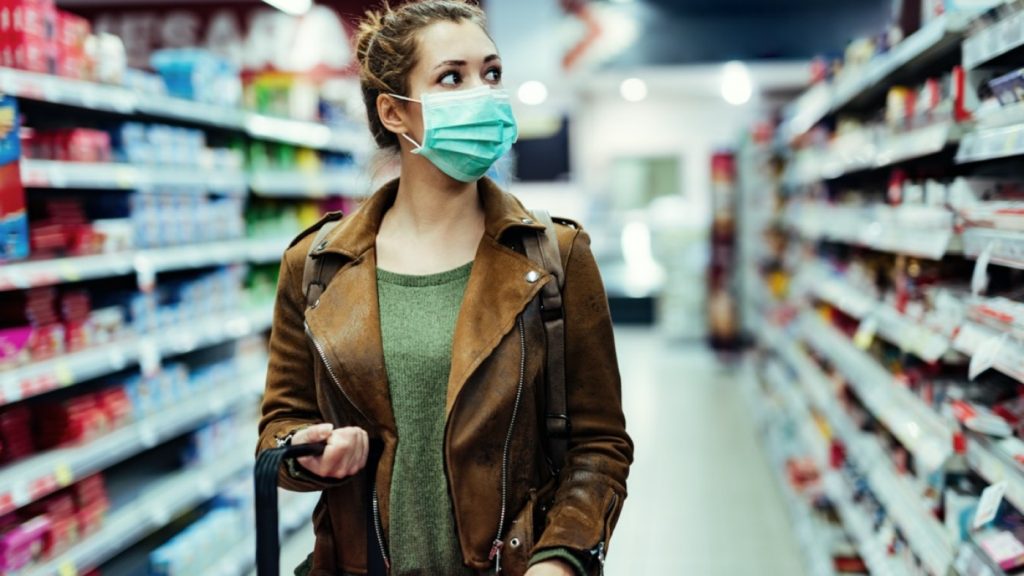A NEW STUDY SHOWS WHY HANDLING YOUR MASK PROPERLY AFTER WEAR IS SO IMPORTANT.

There is significant evidence that wearing a mask or cloth face covering can curtail the spread of COVID-19. It’s a minor inconvenience that can literally save lives. Per Vanity Fair, a group of researchers led by lead architect and computer scientist De Kai, PhD, MBA, created statistical models based on different percentages of the population wearing masks in public, resulting in a paper they’ve submitted to several journals. They found that with 80 percent of people wearing masks, the rate of COVID-19 infections would theoretically be one-twelfth of what it would be if no one did. However, the proper use of masks and face coverings involves taking certain precautions. Coronavirus particles can live on your face mask, just as they can on other surfaces. Here’s what you need to know about their viability.
On May 15, the Italian Superior Institute of Health (ISS) released guidelines for wearing and cleaning masks that state that the virus that causes COVID-19 can live on the inside of a mask for up to four days. Particles can remain on the outside for up to seven days, which is consistent with other research on the subject published by The Lancet in early April.

Coronavirus particles might end up on the outside of your mask if you are within six feet of an infected person or airborne particles land on it. This isn’t scary in and of itself—that means that your mask did its job. And there may be coronavirus particles on the inside of your mask without you knowing because you’re an asymptomatic carrier of the disease. In that case, your mask protected those around you. What happens next is equally important.
Epidemiologist Paolo D’Ancona, of the ISS, told HuffPost Italy that the particles living on masks aren’t necessarily transmittable. That depends on the amount and also environmental conditions—high humidity and lower temperatures are more welcoming to the coronavirus. However—especially because there is still so much that is unknown about how the disease spreads—D’Ancona preaches caution when dealing with worn masks. Do not reuse disposable masks, and wash your cloth masks immediately after wearing. The epidemiologist even warns that you shouldn’t let a used mask touch any furniture in your home before you toss it in the wash. You should try only to touch the elastic straps of the mask with your fingers, and always wash your hands after taking it off.
By wearing a mask whenever you leave your home and especially in places where proper social distancing isn’t possible, you’re essentially stopping COVID-19 in its tracks. Afterwards, you can keep your home and family safe by properly dealing with your used masks, disposable or otherwise.

